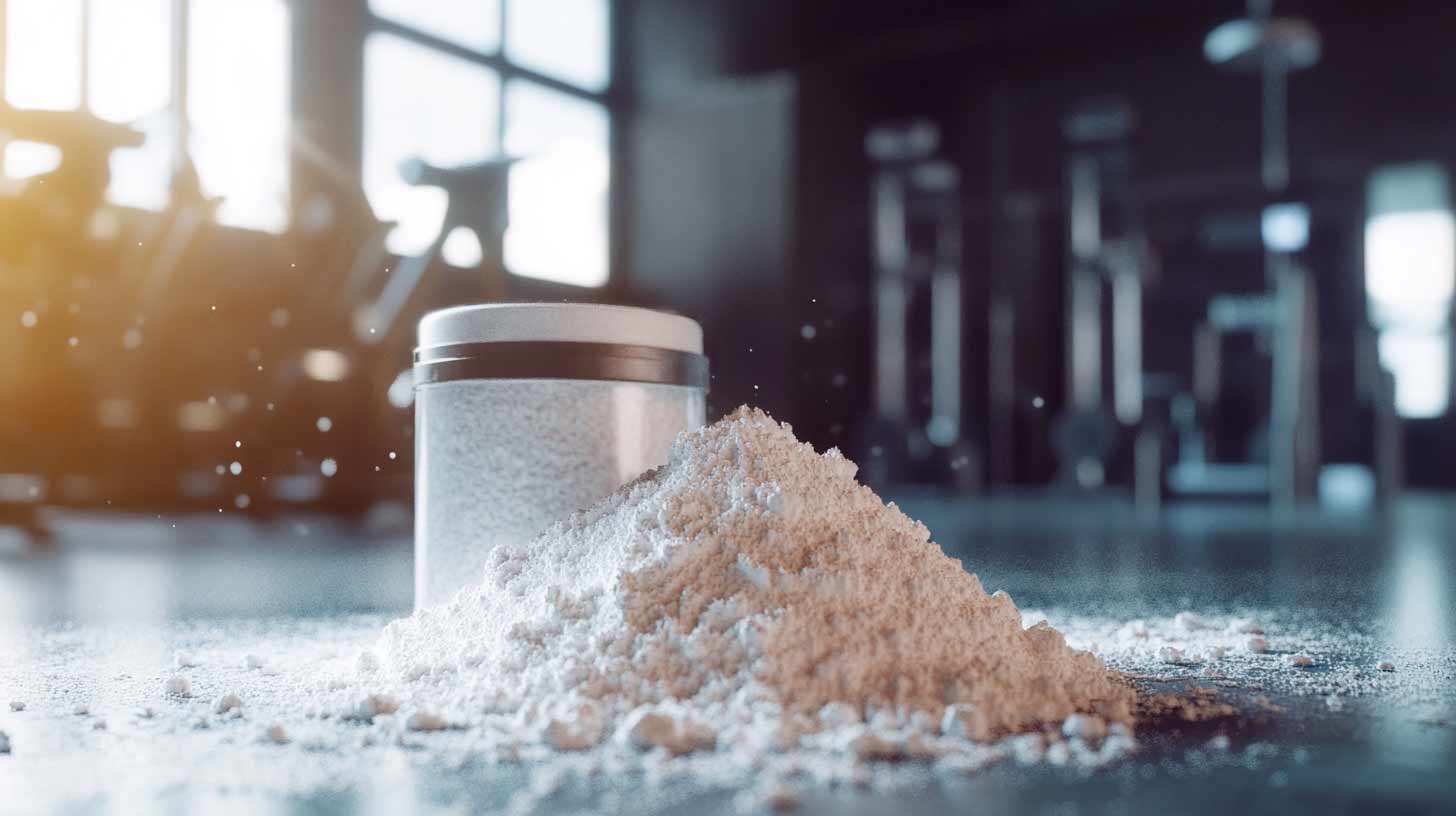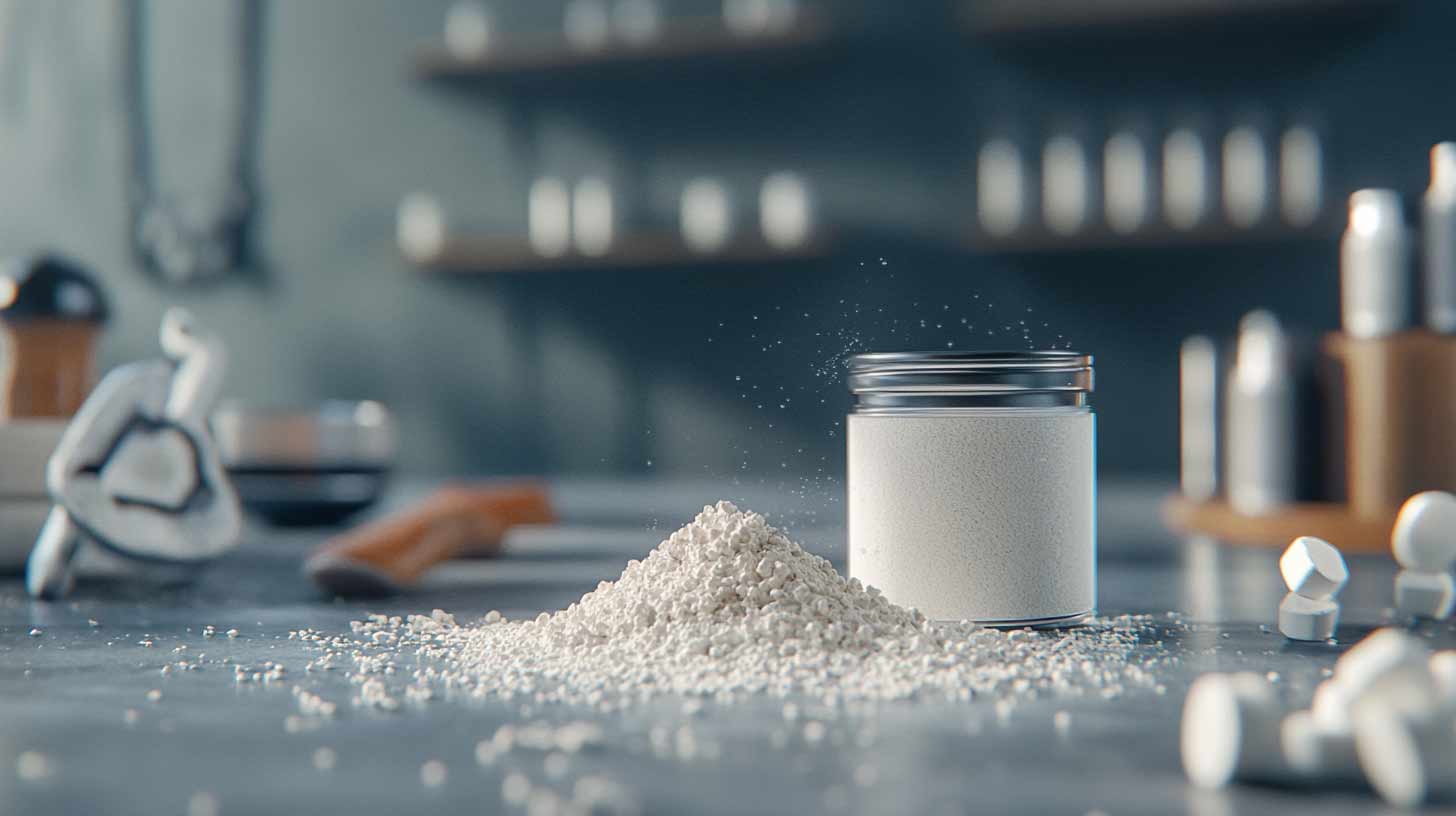Stevia vs sucralose: the choice according to science
Are you looking for the ideal sweetener to combine performance and health without compromise? Between stevia, a natural extract with intense sweetening power, and sucralose, a synthetic sweetener popular in cooking, the choice is difficult. We take a look at the scientific data and practical realities (ADI, impact on microbiota, thermal stability) and practical realities (taste, price, use) to make an informed decision. Ready to find out which sugar substitute really deserves a place in your shaker?
- Natural versus synthetic origin Stevia comes from a South American plant, while sucralose is a synthetic derivative of white sugar, modified to be calorie-free.
- Superior sweetening power Sucralose is around 600 times sweeter than sugar, compared with 50 to 300 times sweeter for stevia, which influences the dosage used in cooking.
- Cooking stability Sucralose can withstand temperatures of up to 130°C, unlike stevia, which begins to break down above 95°C.
- Impact on the microbiota The effect of these sweeteners on the intestinal flora depends on the frequency of use, the initial microbiota and the combination with fibre.
- Taste and aftertaste Stevia can leave a liquorice bitterness, especially in neutral preparations, whereas sucralose imitates the taste of sugar.
- Acceptable daily intake (ADI) EFSA authorises up to 4 mg/kg/day for stevia, compared with 15 mg/kg/day for sucralose, with high safety margins in both cases.
- Neutral metabolic effects Sucralose: Human clinical studies show little or no effect of sucralose on insulin, glycaemia or glycated haemoglobin.
- Cost of use Sucralose is around 3 times cheaper than stevia for the same sweetening power, making it more accessible in sports nutrition.
- Consumer preferences In France, stevia remains more popular because of its "natural" image, despite the better technical performance of sucralose.
- Directions for use It is recommended to test each sweetener over 21 days to assess tolerance, taste and personal effects before using it on a regular basis.
Origins and characteristics of sweeteners
Stevia has its roots in South American traditions where Stevia rebaudiana has been used for centuries. This natural sweetener concentrates its sweetening power in steviol glycosides, plant compounds 50 to 300 times more potent than sucrose. In contrast, sucralose is produced in the laboratory by the selective chlorination of table sugar - a molecular transformation that increases its sweetness 600-fold without adding a single calorie.
Steviol glycosides (stevioside and rebaudioside) activate our taste receptors by mimicking the structure of sugar, while the chlorine atoms added to the sucrose in sucralose block its metabolism. Result: prolonged sweet perception without the energy contribution. This structural difference explains why sucralose tolerates high temperatures in cooking better than its plant counterpart.

Scientific comparison criteria
Safety and tolerance by the body
EFSA sets the acceptable daily intake at 4 mg/kg for stevia, compared with 15 mg/kg for sucralose. The non-toxicity thresholds (NOAEL) are 970 mg/kg and 1500 mg/kg respectively, revealing a wider safety margin for the synthetic sweetener. These values are based on extensive toxicological tests, including trials on several generations of animals.
| Criterion | Stevia | Sucralose |
|---|---|---|
| ADI (mg/kg/day) | 4 | 15 |
| Safety threshold (NOAEL) | 970 | 1500 |
Studies on rodents have shown insulin stimulation when sweeteners are administered, but this is not always the case. these results do not hold true for humans according to a recent meta-analysis involving 1,200 participants. Metabolic differences between species explain this discrepancy, underlining the need to give priority to human clinical data.
Impact on metabolic health
The scientific literature presents mixed findings 37% of studies report a neutral effect on weight, 45% note a reduction in BMI in low-calorie diets, and 18% mention metabolic disturbances in certain profiles.
Interactions with the intestinal microbiota depend on three main factors :
- Frequency of consumption weekly
- Initial diversity digestive flora
- Combining with fibre food
A randomised double-blind trial on 47 men demonstrated the safety of sucralose: after 12 weeks at 15 mg/kg/day, no significant difference on fasting blood glucose (-0.2 mmol/L), insulin (+5.3 pmol/L) or glycated haemoglobin (+0.1%). Carbohydrate load tests confirm this metabolic neutrality.
The cephalic insulin response mechanism is based on stimulation of T1R2/T1R3 receptors on the tongue, triggering pancreatic preparation independent of energy intake. This phenomenon has been observed in rats, but remains marginal in humans, where it is more common. would represent less than 5% postprandial insulin response.
Practical aspects of use
Culinary performance and taste
Sucralose can be baked at temperatures of up to 130°C, compared with 95°C for stevia, making it the world's best-selling sucralose. optimal choice for pastries requiring long exposure to heat. Its molecular stability preserves the integrity of the sweet taste when cooking protein powders or homemade energy bars.
The flavour of stevia has a residual bitterness that is noticeable in neutral preparations, whereas sucralose faithfully reproduces the sweetness profile of sucrose. This sensory difference explains its mass adoption in industrial products where taste neutrality is crucial.
Economic considerations
With the same sweetening power real cost of stevia reaches €2.40 compared with €0.80 for sucralose. This difference is even more marked with bulk formats: 1 kg of sucralose is equivalent to 600 kg of traditional sugar in sweetening capacity.
Fluctuations in the French market show a 12% drop in the average price of sucralose over 3 years, compared with +8% for stevia. These differences are explained by the costs of plant extraction and industrial patents on synthesis processes.
Consumer trends
Despite its technical performance, sucralose only accounts for 35% of sweetener sales in France. National preference for stevia is rooted in a cultural mistrust of synthetic additives, reinforced by marketing campaigns focusing on naturalness.
Sportsmen and women prefer sucralose for its cost-effectiveness in dry nutrition, while diabetics opt more frequently for stevia because of its zero glycaemic index. These choices reflect a differentiated ownership depending on health objectives and budgetary constraints.

Outlook and recommendations
Sports applications
Sweeteners are at their most useful during the muscle-wasting phase, when sucralose helps to reduce by 90% the calorie content of protein snacks. Its excellent heat stability makes it ideal for baked pancakes or energy bars, without compromising taste.
Combined with whey isolate, sucralose effectively masks the bitterness of the BCAAs while preserving the smooth texture of the shakers. This combination is particularly useful for maintaining adherence to strict diets over the long term, where monotony of taste often becomes an obstacle.
Scientific innovations
Extraction processes for stevia are moving towards greater purification of rebaudiosides, reducing the liquorice aftertaste of 40% according to the latest patents. These advances could reposition this natural sweetener in the top-of-the-range sports supplements market.
Research is currently exploring hybrid sweeteners combining molecules natural and synthetic. These third-generation compounds aim to combine the thermal stability of sucralose with the nutritional profile of stevia, while minimising the impact on the intestinal microbiota.
Decision-making guide
Prioritise your choice according to four pillars : food safety, culinary performance, monthly budget and individual tolerance. A customisable comparison table allows you to weight these criteria according to your specific objectives.
The 'natural' argument is no guarantee of safety or nutritional superiority - remember that hemlock and arsenic are also natural. The real distinction lies in the toxicological data and metabolic benefits validated by rigorous clinical trials.
Initiate a 21-day test period with each sweetener, recording your physiological reactions and sensory preferences on a daily basis. This methodical approach will will reveal the optimal option for your sport and your unique metabolism.

Faced with the stevia-sucralose duel, remember this: the technical superiority goes to the synthetic sweetener in terms of heat stability and value for money, despite the natural appeal of its competitor. Choose sucralose for your preparations without neglecting your taste preferences. Your nutritional strategy becomes more precise - it's up to you.
Scientific publications on Rhodiola and stress management
- Stress Management and the Role of Rhodiola Rosea: A Review (This study examines the effects of Rhodiola rosea on stress management, burnout, and associated symptoms) DOI: 10.1080/13651501.2017.1417442
- "Rhodiola rosea and its adaptogenic mechanisms of action (This article discusses the adaptogenic properties of Rhodiola and its impact on energy metabolism) DOI: 10.1080/13651501.2017.1417442
- "The importance of Rhodiola rosea in phytotherapeutic treatments". (This article focuses on the effectiveness of Rhodiola as part of herbal treatments for stress and exhaustion) DOI: 10.1080/13651501.2017.1417442



